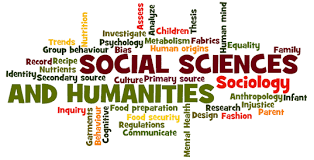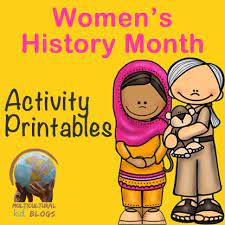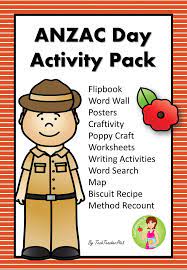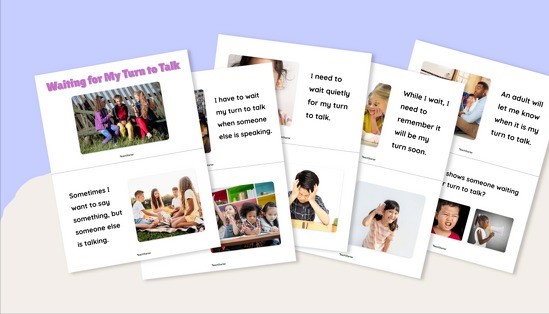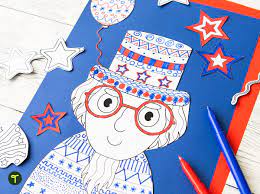Access to educational resources is a fundamental aspect of fostering growth and understanding in the field of humanities and social sciences. As academic disciplines that explore human society and social relationships, humanities and social sciences encompass a wide spectrum of subjects, including history, geography, politics, psychology, sociology, anthropology, and more. To support educators and students alike, an array of free teaching resources is available online. This article highlights some of the most valuable repositories and tools where individuals can find free materials to aid in the teaching and learning of these subjects.
One standout resource is the edX platform. Offering courses from universities all around the world, edX has a broad selection in humanities and social sciences. Though some courses may require payment for certification, the materials themselves—the video lessons and readings—are available free of charge.
Another invaluable resource is the OpenStax initiative by Rice University. OpenStax provides free, peer-reviewed, open-source textbooks which can serve as primary or supplementary reading material for courses across various disciplines within the humanities and social sciences.
The Library of Congress also offers a rich repository with its Teachers section. Within this resource are lesson plans, primary documents, and activities centered on history and culture that can easily be integrated into classroom curriculums.
Project Gutenberg is an archive that offers over 60,000 free eBooks, among which are many classics relevant to humanities courses. Here educators can find works of literature that have entered the public domain.
The Smithsonian Learning Lab is another powerful tool that holds millions of digital resources from across the Smithsonian’s museums, research centers, libraries, archives, and more. These resources include written texts, art pieces, recordings, and historical items—perfect for crafting engaging lessons in cultural studies.
For psychology and sociology instructors looking for specialized content to encourage critical thinking among their students, the Social Science Research Network (SSRN) distributes thousands of scholarly papers for free. The content focuses heavily on contemporary research across social science fields.
Moreover, teachinghistory.org is supported by the U.S. Department of Education and offers resources specifically designed for K-12 teachers who focus on American history education. These materials include teaching guides, primary source documents, professional development tools, and more for enriching history lessons.
Lastly, MERLOT II (Multimedia Educational Resource for Learning and Online Teaching) is a program run by California State University which provides access to curated online learning materials in various languages across numerous disciplines.
In conclusion, there exists a wealth of free teaching resources dedicated to aiding educators in their quest to impart knowledge in humanities and social sciences. These platforms not only provide cost-effective options but also offer diverse methods by which students might explore these disciplines deeply—encouraging both academic success and personal growth through exploration of human society past and present.
Womens History Month Activities for Kids
Engaging children in Women’s History Month is a fantastic way to educate them about the vital contributions women have made to society. Here are a range of activities tailored for kids that combine education and fun during this important month:
1. Biography Time: Encourage children to read the biographies of influential women. From world leaders like Eleanor Roosevelt to pioneers in science like Marie Curie, these stories can be both inspiring and educational.
2. Create a Timeline: Have kids create a timeline that marks significant events in women’s history. This activity will help them understand the progress made over the years and recognize key milestones.
3. Role Play: Let the children dress up as influential women and present a short bio to others. Role-playing can boost kids’ public speaking skills and confidence while they learn about history.
4. Art Projects: Choose an art form—like painting or sculpture—that was popularized or revolutionized by women. Kids can try their hand at this art style, which will help them appreciate the contributions of women artists.
5. Visit Museums: If possible, take children to museums with exhibits highlighting women’s accomplishments, which can provide a more interactive learning experience.
6. Movie Day: There are many kid-friendly movies and documentaries that feature the stories of notable women throughout history. Watching and discussing these films can be an engaging way for kids to learn.
7. Story Time with Women Authors: Read books written by or about significant female figures in history, which can range from Amelia Earhart to Malala Yousafzai.
8. Interview a Woman in the Community: Have kids prepare questions and interview a woman in their community, such as a local business owner, educator, or public servant, to learn about her experiences and achievements first-hand.
9. Crafting Women’s History Month Badges: Children can craft badges featuring famous quotes from historical women or symbols associated with women’s right movements.
By participating in these activities, not only do children gain knowledge about Women’s History Month, but also they learn to appreciate the diverse roles and achievements of women in shaping our world. These activities can spark conversations at home and in classrooms fostering an understanding of gender equality from an early age.
Anzac Day Activities and Resources
Anzac Day, which falls on April 25th every year, is a significant day in Australia and New Zealand. It is a day to honor the members of the Australian and New Zealand Army Corps (ANZAC) who served and died in all wars, conflicts, and peacekeeping operations. Here are some activities and resources that can help commemorate this important day.
1. Dawn Service: Attending a dawn service is a traditional way to honor the ANZACs. These services are held in various locations around both countries, often starting around the time of the original Gallipoli landing — just before dawn.
2. Anzac Day Parade: After the Dawn Service, many places also hold an Anzac Day parade featuring veterans, servicemembers, and sometimes their families and descendants.
3. Bake Anzac Biscuits: Baking Anzac biscuits is not only an educational activity for children but also a nod to history. These biscuits were originally made to be sent to the ANZACs serving abroad because they didn’t spoil easily.
4. Craft Poppy Wreaths: Making poppy wreaths can be an activity for schools or families. Poppies have become a symbol of remembrance and can be laid at local memorials or used in home decorations.
5. Educational Resources:
– Books: There are many books available that discuss the history of Anzac Day suitable for various age groups.
– Online Resources: Websites like the Australian War Memorial (awm.gov.au) offer extensive archives and educational materials.
– Documentaries and Films: Watching historical documentaries or films can be a way to understand the sacrifices made by ANZAC troops.
6. Anzac Day Commemorative Services Elsewhere: For those abroad, many embassies host commemorative services which can be attended by expatriates and locals alike.
7. Museum Visits: Many museums in Australia and New Zealand have exhibitions relating to the ANZACs where people can learn about individual stories, historical events, and view artifacts from wartime.
8. School Programs: Schools often have special programs or assemblies on Anzac Day that might include guest speakers such as veterans or current servicemembers.
9. Local Library Events: Libraries may hold storytelling sessions for children with Anzac-themed books or display wartime letters and diaries from their archives.
10. Social Media: Sharing stories or supportive messages on social media platforms using hashtags like AnzacDay or LestWeForget can also be a means of participating in the commemoration digitally.
Using these activities and resources, individuals and communities can mark Anzac Day with both reflective remembrance rituals and educational enrichment experiences, ensuring that the legacy of these brave servicemen and women continues on through new generations.
25 Social Stories Use Mainstream Classroom
The use of “Social Stories” has emerged as an innovative educational strategy to help students with Autism Spectrum Disorder (ASD) navigate social interactions and understand complex social cues. However, their utility extends beyond special education settings and can be beneficial in mainstream classrooms too. Here are 25 ways Social Stories can be used:
1. Enhancing Empathy: Social stories can illustrate different perspectives and feelings that friends might experience, promoting empathy among students.
2. Explaining Classroom Rules: Simplified narratives can clarify classroom rules for all students, ensuring everyone understands expected behaviors.
3. Promoting Inclusion: Stories about diversity and acceptance encourage inclusion for students of all abilities and backgrounds.
4. Improving Transitions: Moving between activities can be difficult; social stories can prep students for changes in routine.
5. Preparing for Substitutes: A story explaining the arrival of a substitute teacher can ease anxiety some students may feel.
6. Encouraging Sharing: Sharing toys or materials is a common issue; social narratives can teach the benefits and logistics of sharing.
7. Facilitating Group Work: Stories about collaboration can prep students on how to work effectively with peers on group projects.
8. Teaching Conflict Resolution: Scenarios presented in social stories can demonstrate peaceful ways to resolve conflicts.
9. Modeling Good Listening Skills: Social stories can highlight the importance of listening skills during class.
10. Understanding Nonverbal Cues: Stories can be used to explain body language and facial expressions typical in communication.
11. Managing Emotions: They’re great tools for helping children recognize and cope with various emotions such as frustration or excitement.
12. Explaining School Events: Describing events like fire drills or assemblies helps prepare students for these occurrences.
13. Encouraging Hygiene Practices: Handwashing or personal space stories can promote health and safety within the classroom.
14. Building Friendships: Narratives focusing on making friends support social relationship building among classmates.
15. Teaching Problem-Solving Skills: Students learn to approach problems and find solutions through structured story scenarios.
16. Understanding Time Management: Illustrations showing time-related concepts help students grasp punctuality and patience.
17. Promoting Respectful Behavior: Through stories, children learn the importance of treating others with respect.
18. Improving Attention During Lessons: Social stories related to attentiveness show how staying focused contributes to learning success.
19. Encouraging Positive Play: Stories model positive play behaviors during recess or free play moments.
20. Navigating Cafeteria Etiquette: A story explaining cafeteria behavior teaches everything from queuing to table manners.
21. Promoting Responsibility: Children learn about responsibilities through examples like taking care of personal belongings or classroom duties.
22. Understanding Cultural Differences: Educational narratives present different cultures, fostering a multicultural appreciation among students.
23. Supporting New Learning Challenges: As new topics are introduced, social stories set up expectations and simplify complex ideas.
24. Normalizing Mistakes: By sharing tales of errors made by others and subsequent lessons learned, children understand that making mistakes is okay.
25. Celebrating Achievements: Highlighting individual or group achievements in stories fosters a sense of pride and motivation in learning environments.
Incorporating Social Stories into mainstream classrooms is not just a tool for easing the academic journey for students with ASD; it fortifies the learning experiences for all children by nurturing an environment filled with understanding, compassion, and cooperation—all foundational elements for effective education in a diverse world.
Social-Emotional Learning During Distance Learning (Social Stories Included)
In the age of distance learning, educators and parents alike are questing for effective strategies to support children’s social and emotional development. One such strategy that has gained traction is Social-Emotional Learning (SEL), which refers to the process through which individuals acquire and effectively apply the knowledge, attitudes, and skills necessary to manage emotions, feel and show empathy for others, establish positive relationships, and make responsible decisions.
The shift to online education has challenged conventional SEL approaches, necessitating innovative techniques to engage students. This is where social stories can play a pivotal role. Social stories are short narratives designed to teach individuals, particularly those with developmental challenges, how to navigate social situations. However, their benefits extend far beyond this demographic. Amidst the impersonal nature of digital classrooms, these stories provide a framework for understanding and articulating feelings and behaviors that correspond with remote interactions.
The Impact of SEL on Distance Learning
During remote education, students may experience heightened feelings of isolation and anxiety. SEL can help mitigate these impacts by promoting understanding and compassion among peers. Developing self-awareness and self-management skills allows students to better cope with the pressures of home learning environments.
SEL also empowers students to stay connected virtually. By fostering relationship skills through activities like peer collaboration projects or guided discussions in online forums, children can maintain social connections crucial for their emotional growth.
Utilizing Social Stories for SEL in Online Classrooms
Social stories offer a narrative structure that makes abstract emotions more tangible for children. Here’s an example of how a social story could be implemented within distance learning settings:
Title: “The Whispering Chat Box”
Story Content:
– Illustrates the importance of taking turns while communicating online.
– Shows characters experiencing various feelings when messages are ignored or talked over.
– Ends with tips on using polite conversation starters and waiting patiently for responses in virtual settings.
Implementation:
1.Teachers can read the story during an online class session while screen-sharing illustrations.
2.Engage students in a discussion about times they have felt similar emotions during virtual classes.
3.Collaborate on a chart listing ways students can support each other’s contributions in class.
Conclusion
SEL is a vital component of child development, even more so in the realm of distance learning where physical distancing can exasperate emotional disconnects between students. Integrating social stories into SEL activities not only helps in making interactions meaningful but also offers a guiding light for behaviors that foster regard for others’ feelings – something deeply needed in our increasingly virtual world.
By implementing SEL practices through creative storytelling online, educators not only support academic achievements but also cultivate a generation who are empathetic collaborators ready to thrive in any setting — physical or digital.
How to Send Veterans Day Cards From Your Students to Vets Active Duty Personnel
Sending Veterans Day cards is a thoughtful and impactful way to teach students about the importance of honoring those who have served our country. Here is a guide to help educators facilitate this activity with their students.
Step 1: Start with Education
Before you begin creating the cards, it’s important for students to understand the significance of Veterans Day. Take some time to educate them about the history and why it’s essential to honor veterans and active duty personnel.
Step 2: Materials and Instructions
Gather materials such as cardstock, markers, stickers, and any other decorative items. Provide students with card-making instructions and encourage creativity while maintaining a respectful tone in the messages.
Step 3: Writing Messages
Encourage your students to write heartfelt messages expressing gratitude. These can include thanking the veterans for their service, acknowledging their courage, and wishing them happiness and health.
Step 4: Collecting Cards
Set a due date for when all cards should be completed and collect them. This will give you time to organize them before sending.
Step 5: Finding Recipients
Research local veteran organizations, VA hospitals, or military bases where you can send the cards. You can also look for national programs that distribute cards to veterans and active duty personnel.
Step 6: Mailing the Cards
Once you have a list of recipients or a program to send cards through, package the cards securely and send them out in a timely manner so they arrive before Veterans Day.
Step 7: Reflecting on the Experience
After sending the cards, take some time for your students to reflect on what they’ve learned from the experience. Encourage them to discuss their feelings about the project and its impact on their understanding of military service.
By sending Veterans Day cards from your students to vets and active-duty personnel, you’re not only honoring those who serve but also fostering a sense of gratitude and patriotism in young people.
Celebrate Presidents’ Day with Engaging Activities for Kids
Presidents’ Day, originally established in 1885 in recognition of President George Washington, is now viewed as a day to celebrate all U.S. presidents past and present. It’s a fantastic opportunity for educators and parents to engage children in history lessons and activities that honor the leadership and legacy of the nation’s commanders-in-chief.
Here are eight engaging activities to help kids understand and celebrate Presidents’ Day:
1.Presidential Fact Files: Create a classroom project where kids research facts about different U.S. presidents and present their findings. Each child could focus on a different president, creating a fact file that includes key achievements, historical events during their presidency, and interesting trivia.
2.Mount Rushmore Art: Get creative with an art project focusing on Mount Rushmore. Students can learn about the four presidents featured (George Washington, Thomas Jefferson, Theodore Roosevelt, and Abraham Lincoln), why they were chosen, and then draw or sculpt their version of this iconic monument.
3.White House Tour: Take an online virtual tour of the White House. This is an excellent way for students to see where every president since John Adams has lived and worked while serving as commander-in-chief.
4.Presidential Timeline: Create a timeline in class featuring significant events from various presidencies. This activity will help children understand the chronological order of presidents and historical milestones.
5.Role Play: Students can role-play as different presidents to learn about pivotal decisions made during their tenure. This helps build public speaking skills and deepens their understanding of presidential responsibilities.
6.Write Letters to the President: Encourage children to write letters to the current president expressing their ideas on what makes a good leader or sharing their thoughts on an issue important to them.
7.Campaign Posters: Have students create campaign posters for famous presidential elections or invent their candidates and campaigns based on what they’ve learned about leadership qualities.
8.Presidential Speech Analysis: Older students can analyze famous speeches by past presidents, looking at rhetoric, style, content, and historical impact. They can present their analyses to the class or even attempt writing their version of a presidential speech.
By incorporating these Presidents’ Day activities into your curriculum or at home, you provide a meaningful way for children to connect with American history and understand the significance of the presidency in shaping the United States.
Remembrance Day Classroom Activities
As Remembrance Day approaches, it’s important to engage students in activities that honor veterans and those who have served their country. This article outlines a variety of classroom activities suitable for Remembrance Day that will help educators teach about the significance of this day.
1. Moment of Silence: Begin the day with a school-wide moment of silence. This gives students an opportunity to reflect on the sacrifices made by service members. A discussion can follow about why we observe these moments and the history behind them.
2. Poppy Crafts: Have students create their own poppies out of paper, fabric, or felt. The poppy is a symbol of Remembrance Day and crafting them can be a hands-on way for students to engage with the day’s meaning.
3. Letters to Veterans: Encourage students to write thank-you letters or cards to veterans or active service members. This activity teaches gratitude and provides a personal connection to the people who serve their country.
4. Poetry Writing: Reading and writing poetry can be a powerful way to explore themes of peace, war, remembrance, and sacrifice. Students might write an acrostic poem using the word ‘REMEMBER’ or create haikus focusing on peace.
5. Historical Research Projects: Assign students to research different wars or military conflicts and present their findings to the class. This can include stories of individual soldiers, major battles, or the impacts on families and communities.
6. Veteran Guest Speakers: Invite local veterans to speak in your classroom about their experiences. It’s a chance for students to ask questions and learn first-hand about the lives of people who have served.
7. Remembrance Day Assemblies: Organize an assembly with songs, poems, and presentations that focus on the theme of remembrance. Students can participate by singing national anthems, reciting poems, or displaying art inspired by Remembrance Day.
8. Educational Videos: Show educational videos that explain the history and significance of Remembrance Day. Discuss afterwards to reinforce learning and address any questions from students.
9. Create a Wall of Honor: Designate a wall in your classroom for students to display pictures or names of family members who have served in the military, accompanied by short descriptions written by the students.
10. Field Trips: Visit local war memorials or museums if possible so that students can see and experience history outside the classroom.
Remembering those who served requires teaching new generations about their sacrifices. Implementing these classroom activities around Remembrance Day serves as an excellent opportunity for educators to instill respect and remembrance in their students for those who have contributed so much for their country’s safety and freedom.
Social Emotional Learning Teaching Resources
Social emotional learning (SEL) has emerged as an integral part of education, addressing students’ needs for developing self-awareness, self-management, social awareness, relationship skills, and responsible decision-making. As educators increasingly recognize the importance of incorporating SEL into the classroom, a myriad of resources have been developed to support this holistic approach to teaching.
One key resource is the Collaborative for Academic, Social, and Emotional Learning (CASEL) framework, which provides a systematic approach to SEL. Through its research-based framework, CASEL outlines competencies and offers guidelines and tools that can be adapted for different school environments. Educators can access free guides and toolkits via their website to integrate SEL principles into their curriculums.
Another significant resource comes from the Yale Center for Emotional Intelligence’s RULER program, which stands for Recognizing, Understanding, Labeling, Expressing, and Regulating emotions. This evidence-based approach involves both direct instruction for students and professional development for teachers. The program provides activities and lesson plans designed to foster emotional intelligence in students.
Additional teaching resources are available through Edutopia, a trusted source of educational strategies founded by filmmaker George Lucas. Edutopia offers a collection of videos and articles about best practices in SEL that can be easily incorporated into daily classroom activities.
Furthermore, MindUP curriculum is based on neuroscience and provides 15 lessons that engage students in learning about the brain’s functions related to emotion regulation and mindfulness practices. Developed by The Goldie Hawn Foundation, MindUP aims to help children improve focus while developing a positive mindset.
Lesson Planet is another practical resource where educators can find teacher-reviewed SEL lessons classified by grade level and subject area. These lessons range from teaching empathy through literature studies to conflict resolution through role-playing exercises.
For digital apps and games that integrate SEL principles, Common Sense Education handpicks the best digital resources providing detailed reviews aimed at educational appropriates. Here teachers will find various digital tools that make learning SEL skills interactive and engaging.
Lastly books like ‘The Heart of Learning and Teaching: Compassion, Resiliency, and Academic Success’ by Ray Wolpow et al., provide deep dives into the emotional lives of students and offer strategies for building compassionate school communities where SEL can thrive.
These resources collectively offer educators a comprehensive toolbox for implementing Social Emotional Learning effectively in their classrooms. By cultivating these skills early on, we prepare our students not just academically but emotionally too — equipping them with the resilience needed to succeed throughout life.
NAIDOC Week 2024 Teaching Resources
NAIDOC Week has always been a vital time in Australia to celebrate the rich history, culture, and achievements of Aboriginal and Torres Strait Islander peoples. As we approach NAIDOC Week 2024, schools and educational institutions across the country are gearing up to immerse students in a learning experience that is both engaging and enlightening. To aid educators in navigating this important week, a slew of innovative teaching resources have been made available.
These resources come in various formats to cater to diverse learning environments and styles. Interactive apps have been specifically developed for NAIDOC Week 2024, which provide a hands-on approach to learning about Indigenous culture, language, and history. These apps include storytelling features with Indigenous Elders sharing tales passed through generations, along with quizzes and games that reinforce learning outcomes.
Printable workbooks tailored for different year levels feature activities that encourage critical thinking about Australia’s Indigenous heritage. These workbooks include coloring pages illustrating notable Indigenous figures, word searches with relevant vocabulary, and questionnaires designed to prompt discussions about reconciliation and understanding.
Virtual Reality (VR) experiences have taken center stage for NAIDOC Week 2024. By donning VR headsets, students can embark on virtual tours of significant Indigenous sites, allowing them to explore ancient landscapes and learn about traditional practices from the comfort of their classroom. Educators can guide these experiences, pausing at teachable moments to delve deeper into the stories behind these sacred sites.
Moreover, extensive video libraries are accessible featuring interviews with community leaders, documentaries on Indigenous achievements, and historical retrospectives. These videos serve as conversation starters and provide authentic voices that enrich the classroom discussion about Aboriginal and Torres Strait Islander contributions to modern Australia.
Lesson plans have been carefully crafted by educational experts in cooperation with Indigenous communities to ensure they are culturally sensitive and informative. These plans offer step-by-step guidance for teachers on how to approach various topics within NAIDOC Week, from land rights issues to the celebration of Indigenous music and art.
To support language preservation efforts, phrasebooks and language learning tasks have been included. These resources introduce students to the diversity of languages spoken by Aboriginal and Torres Strait Islander peoples, fostering an appreciation for linguistic heritage.
The emphasis this year is also on participatory activities that extend beyond the classroom. This includes invitations for local Indigenous people to conduct workshops on art, storytelling or traditional dance during school assemblies or community gatherings—providing a tangible connection between students and the living traditions of Australia’s First Nations communities.
Additionally, resource packages include tips for respectful engagement with Indigenous content all year round—not just during NAIDOC Week. This ensures that reflection on Australia’s Indigenous cultures becomes an enduring part of curricula rather than a one-off event.
In conclusion, teaching resources for NAIDOC Week 2024 are designed not only to educate but also inspire new generations about the importance of embracing and respecting the world’s oldest continuous cultures. Through interactive technology, thoughtful printed materials, engaging videos, comprehensive lesson plans, language resources, and community participation initiatives—students will have a multifaceted understanding of Aboriginal and Torres Strait Islander peoples’ identity, resilience, contribution, and heritage.
